Conventual Franciscan Friar Charles McCarthy sees his ministry with Native Americans in the Southwest as one of accompaniment and respect.
The soft-spoken Franciscan leads me into the 17th-century Church of St. Joseph. I pause for a moment to take in the silence and the sacred space—the white adobe walls, the carved wooden vigas (beams supporting the roof) and reredos, or altar screen, with portraits of saints. Murals on the sanctuary ceiling and church walls capture the world as seen through the vision of the Laguna people.
Since photography is not usually permitted inside, Conventual Franciscan Friar Charles McCarthy explains the symbolism. A couple of months later, the church will come alive for me with parishioners from Laguna Pueblo as I celebrate the Sunday liturgy there, conscious that I am standing in the footsteps of missionaries who have served the Laguna people since 1699.
According to records kept by Marquette University, Franciscans from Mexico established the mission of San José de Laguna in 1699 and served there until replaced by diocesan priests in 1852. The Franciscans returned in 1910 and have ministered here since—first, the Order of Friars Minor’s St. John the Baptist Province, Cincinnati, Ohio, and, since 1985, the Province of Our Lady of Guadalupe (OLG).
A friar of OLG Province, Father Chris Kerstiens, OFM, continues to assist the parish and the neighboring missions of Acoma Pueblo as parochial vicar. Friar Charles arrived in June 2021 to become the first Conventual Franciscan to serve as pastor in Laguna and Acoma, in collaboration with OLG Province and the Conventual Franciscan Province of Our Lady of Consolation.
Like so many non-Native ministers in Indigenous Catholic parishes, they have taken on the learning curve that confronts anyone seeking to serve in a culture other than their own.
‘No to Colonialism’
According to a study by the Center for Applied Research in the Apostolate (CARA) in a 2019 document called Two Rivers: A Report on Catholic Native American Culture and Ministry, about .09 percent of US Catholics are estimated to be American Indian or Alaskan Native, a total of 708,000, based on 2015 figures.
The CARA report notes that “over more than 500 years, the diversity of the global Church has grown in the United States as evangelization, colonization, slavery, and immigration have transformed the background and demography of residents.”
Demographics and the ethnic makeup of many US Catholic parishes have changed greatly. The resulting upheaval has not always been peaceful: merging parishes due to priest shortages, juggling Mass schedules to accommodate liturgies in multiple languages, maintaining Catholic schools for immigrant students, becoming advocates for justice in the face of the ongoing awareness of racism and colonialism in the United States.
Language or cultural barriers aside, Father Greg Friedman says that God is calling us to embrace one another.
Most recently, Americans beyond the Catholic Church have found themselves wrestling anew with long and sad legacies of slavery and colonialism—even as the nation coped with unrest, political division, and a global pandemic.
Such calls for change are often coupled with the need for “reconciliation,” “economic restitution,” and—most prominently—“decolonization.”
On an apostolic journey to Ecuador, Bolivia, and Paraguay in July 2015, Pope Francis addressed the Second World Meeting of Popular Movements. He declared: “Let us say no to forms of colonialism old and new. Let us say yes to the encounter between peoples and cultures. Blessed are the peacemakers.” Like his predecessor, St. John Paul II, Pope Francis humbly asked forgiveness “not only for the offenses of the Church herself, but also for crimes committed against the Native peoples during the conquest of America.”
‘Two Rivers’ of Faith and Culture
Friar Charles was born on the South Side of Chicago in 1951. He began the path to Franciscan life in the Conventual Franciscans’ seminary system in 1969, in the time of change within the Church begun at the Second Vatican Council. He left formation after two years to earn a degree in secondary education, while also steeping himself in Native American studies.
Returning to the seminary, he earned his master’s in divinity degree in an ecumenical setting at Northwestern Lutheran Theological Seminary in St. Paul, Minnesota. He made his first profession as a friar in 1975 and was ordained a priest in 1979.
Friar Charles then began a diverse ministry career—vocation animator; missioner in Honduras and Denmark; immigrant/migrant minister in the Rockford, Illinois, Diocese; pastoral ministry at an urban Pueblo in El Paso, Texas, and an English/Spanish/Chinanteco parish in Richfield, Minnesota; and Hispanic ministry in Louisville. After two years attempting to reinitiate an urban ministry among First Peoples in Albuquerque, he was assigned as pastor serving the Laguna and Acoma Pueblos.
Bishop James Wall of the Diocese of Gallup, New Mexico, is former chair of the US Bishops’ Subcommittee on Native American Affairs. He has spoken of “the two rivers of Native American tradition and Catholic faith that flow into one.”
After my visit to Laguna Mission, I sat down with Friar Charles to explore these two rivers.
How much influence did your studies at a Lutheran seminary have on you?
Oh, probably huge, because we examined theological principles from different angles and from different points of view. Theological study was contemporary. It was actual. It was an energizing time to be in. That study also involved what is called “contextual education.”
How do you define “contextual education”?
Taking theological reflection to the place and experience of ministry. When arriving in a new place, one looks around, goes to meet people, isn’t quick to say that one knows what’s going on when one doesn’t. It’s OK to say, “I don’t know.”
For example, when ministering in a neighborhood, find out where the fire department is, police station, hospitals, the schools. Meet school principals, civic leaders, and offer your assistance. What issues are people in the neighborhoods—as well as the kids in the schools—facing? What impact might pastoral ministry and theological reflection have on the people’s reality? Get the census figures: What’s the makeup of the neighborhood? What are the income levels? What’s the poverty level?
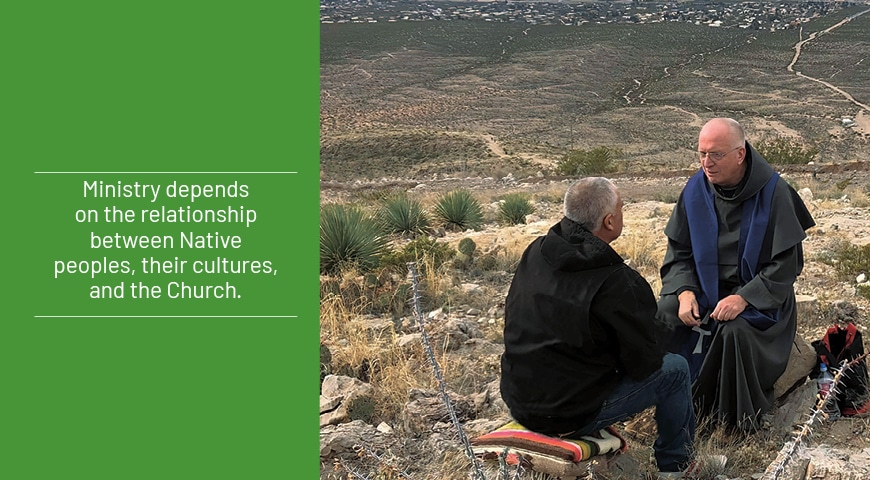
The Tortuga Mountains in Las Cruces, New Mexico, provide a serene backdrop as Friar Charles McCarthy, OFM Conv, hears confession.
Have you extended that approach to ministry among Native Americans?
When I came to Albuquerque, I needed to find where the Native populations were living, in which parishes, so I could approach pastors and see if there was a willingness to collaborate. It’s important to find out who the Indigenous people are.
Do they come from a big nation, like the Navajo Nation (over 300,000 members)? Or are people from a tribe of just a few hundred members living in an urban setting? What network do they have?
Beyond “where people are,” it’s important to know what the cultures are. For example, there is no monolithic “Native American culture,” right? There is a diversity of cultures that fit into what we box into “Native American” or “First Peoples.”
Ministry depends on the relationship between Native peoples, their cultures, and the Church. Besides a Catholic presence, there are places where the Mormons, Lutherans, Episcopalians, Presbyterians, as well as the Native American Church are active. There are many historic frustrations and hurts between the peoples and the Churches. These “scars” impact how one can encounter a reality and accompany people.
What does decolonization mean?
Decolonization is an awakening of cultural identity and values among First Peoples worldwide impacting European thought and processes. It involves reclaiming ethnic identity and values and is a movement to redress the injury without whitewashing or burying the experiences.
In the United States and Canada, treaties were signed concerning land use and territory, rights, and autonomy but were, and often still are, ignored. From the First Peoples’ perspective, the European “invaders” took the land and moved First Peoples off their land. There was wholesale dislocation of peoples, annihilation of cultures, even an elimination of some peoples.
So, decolonization involves changing perceptions?
There is a perception that Native people are poor, unintelligent, incapable of doing anything at a “cultural” level. The reality is [that] diverse peoples [are] informed with sound cosmologies and an integral relationship with nature, often radically different from European thought. First Peoples are incorporating this “Native” understanding as they teach in the universities, work as civil servants, first responders, and scientists, and are impacting the dominant society.
Yes, there’s poverty. Poverty’s causes are, at times, resulting from the historical dislocations, active marginalization of First Cultures, disenfranchisement, and climate change. The people of Laguna and Acoma, for example, are traditionally agricultural people. Within a few generations farms and pastures have dried up.
How do we overcome perceptions?
I’m not a Native person, so I’m outside that loop. I must figure out how to appreciate and respect the people in the loop. I need to honor their voice, to encourage their voice to be heard, to call the voice forth: “Who and how are you?”
At a recent listening session of Franciscans with Navajo people, a Secular Franciscan woman stood up. She was an elder, probably in her mid-to-late 80s. She said: “When your brothers first came out here, before they did anything, they sat with our holy men to hear our story. The friars understood who we were, and many of them learned our language.”
Learning to listen and honor traditions is core to entering the context of the lives of people to learn how to be present and to accompany.
Cultures are often secretive. Are there times when people share their ways?
Right. At one of the Pueblos, when we’d finished with a liturgy, another friar heard drums in the village. He said, “OK, we can’t go that way because we have not been invited.” There was a private ritual underway.
One day, at Laguna, while exiting after Sunday liturgy, the sacristan said: “Don’t go out the door, Father, stay here. Say goodbye to the people here. There’s a traditional ritual being celebrated in front of the church. Only the people can participate.” On another occasion, there was a procession with the patron saint. Somebody comes scurrying up: “Father, stop. You went past the point.”
When I asked, “What point?” I was told, “Back there, you were supposed to stop and offer the saint incense to bless the four directions.” She then explained what I was expected to do. People will tell you what they need you to do.
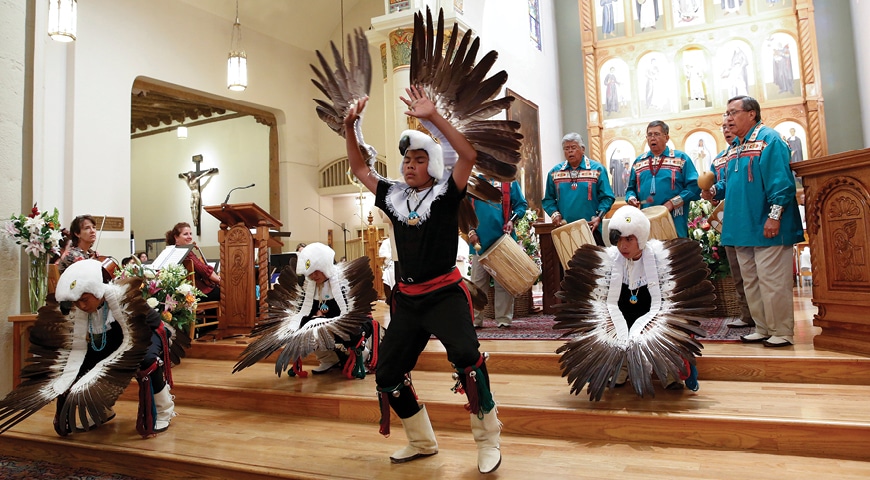
Youths from Laguna Pueblo, accompanied by drummers and chanters, perform the Eagle Dance during the installation of Archbishop John C. Wester at the Cathedral Basilica of St. Francis of Assisi on June 4, 2015.
What are some points of intersection for Christianity and indigenous cultures?
Blessing is common to all cultures. But how do you bless? We bless with holy water. The Navajo bless with corn pollen. The Pueblos bless with corn pollen and corn meal. There are some blessings with tobacco, sage, sweetgrass, and many other organic items.
Like us, Native cultures have healing rituals. Where we do healing rituals with oil, depending on the culture, First Peoples may use different herbs and smudge [smoke], as with the Plains Peoples. Here people don’t use smudge (as often). They know how, but it’s not something that is originally from the local culture. A lot of people don’t realize that Christianity and Judaism, like Native religions, are lunar. For example, for us, Easter is the first Sunday after the first full moon of the lunar equinox.
And we both reverence creation, right?
We use the words Creator and creation. First Peoples often find it easier to talk about God as Father, Mother, because the Creator and the earth are the two principles that are equal in giving us life and supporting us and supporting each other. It isn’t dualism, but it’s duality, complementary—I think there’s a difference there. The feminine, the masculine, the yin and the yang. How many cultures have that? The power of the earth as mother. The earth is our origin. It’s where we return.
Do you have any examples of how christian and indigenous cultures can share symbols?
A potter from Acoma Pueblo made a clay incense pot for one of our friars. She asked if she should paint a cross on it. So, I showed her a picture of something that her mother, also a potter, had made at St. Ann’s Church in Acomita. It was a cross—a symbol common to both yet distinct as well.
When she had completed the incense pot, she explained its symbols: The cross for people in the Southwest symbolizes the four directions, the four winds and the North Star—the same symbol has multiple meanings. The cross on the pot has stripes through it, which symbolize rain, a blessing.
So In the End…
Cross-cultural ministry is about accompaniment and respect, a willingness to encounter and attempt to understand diversity. Life in a culture other than one’s own is more about listening than speaking, more about discovering together than giving answers. Christianity has picked up many traditions “along the way,” enhancing its roots.
What does Christianity—what could Christianity in dialogue look like, where you are?


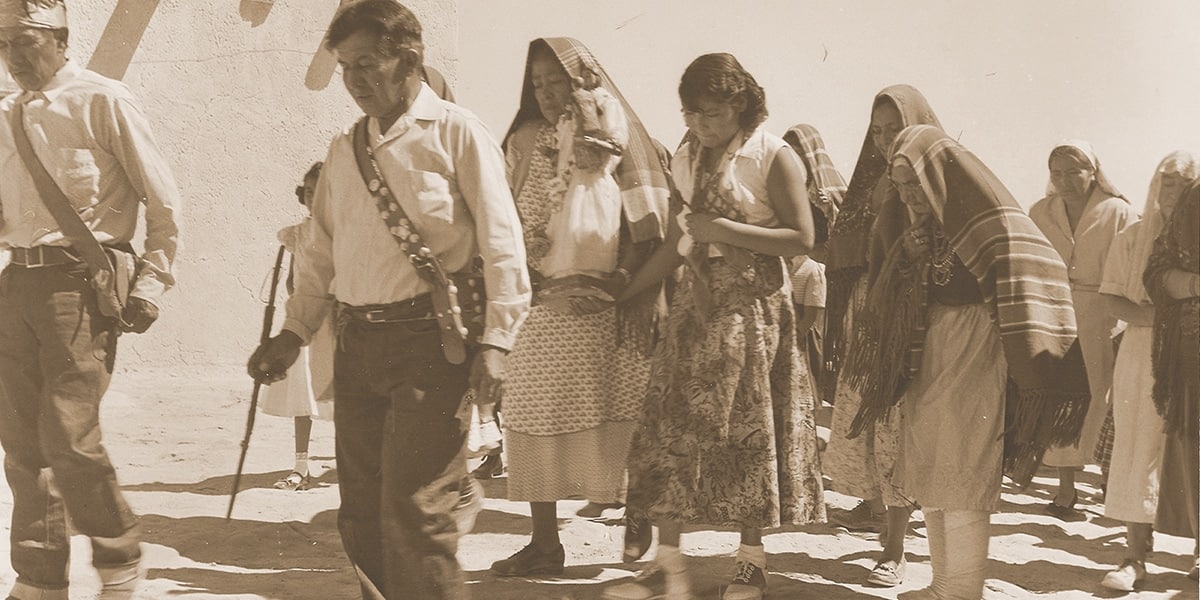

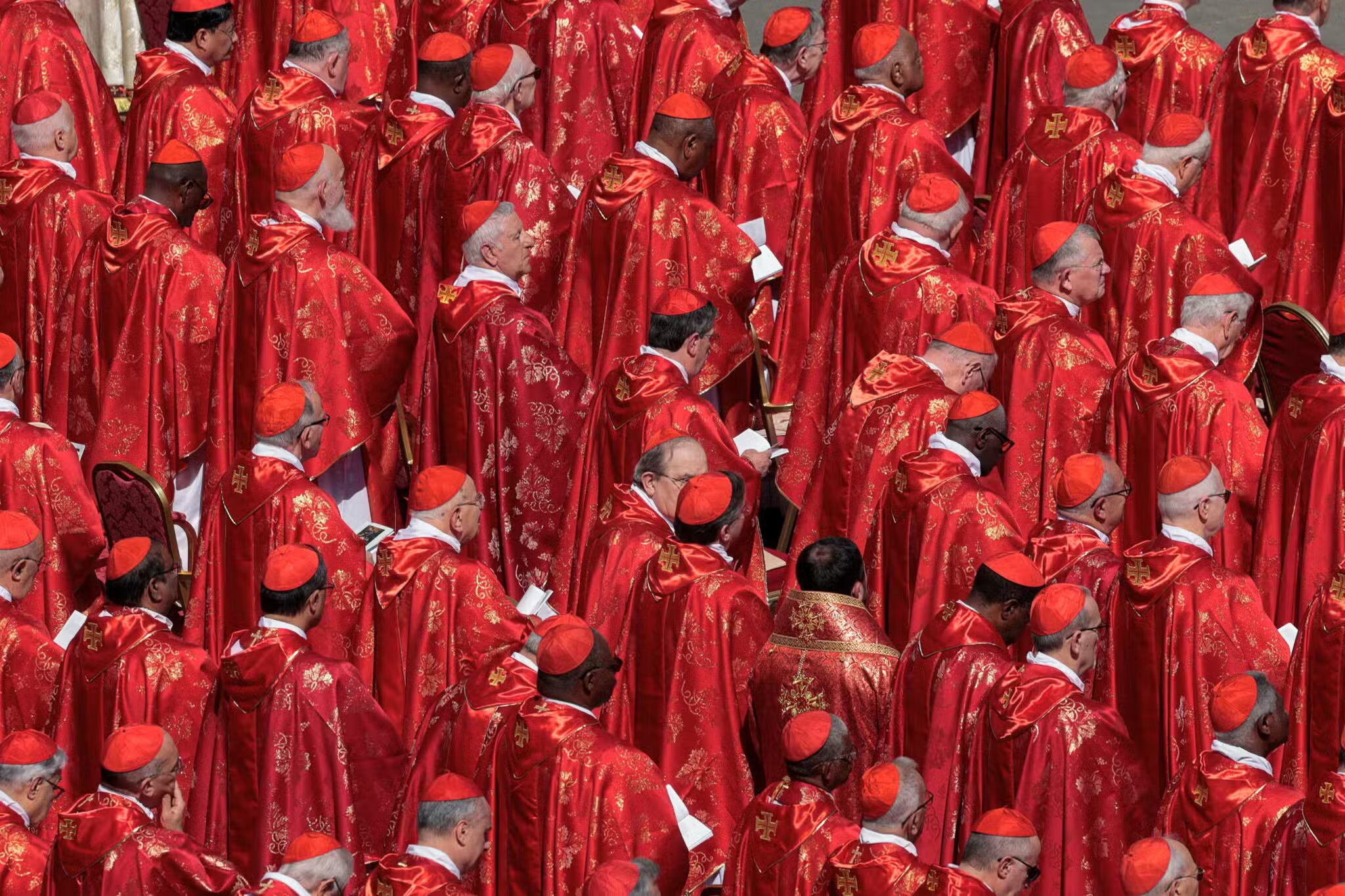
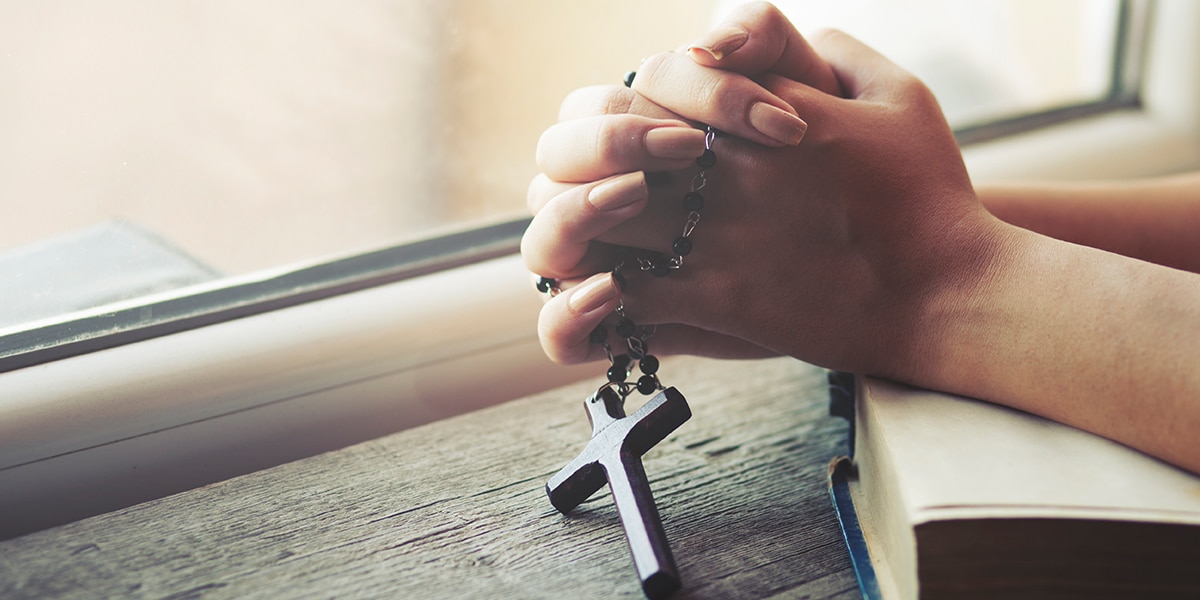
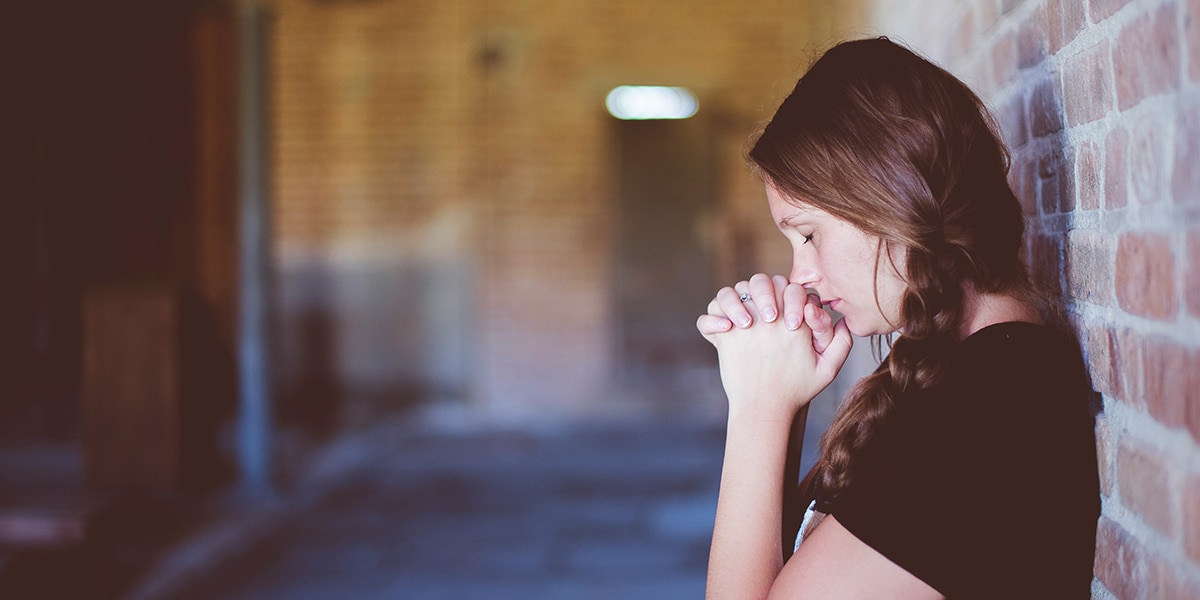

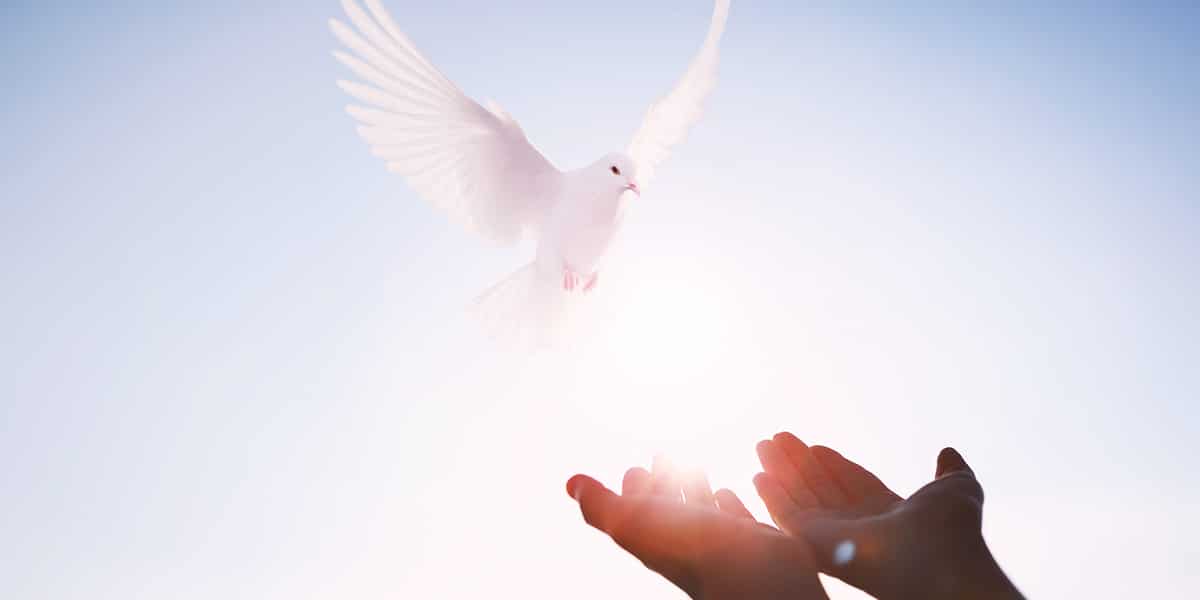
2 thoughts on “Sacred Places, Sacred People: Franciscans and Native Americans”
For the past year I’ve been searching for explanations on how to blend Native spiritually and Catholic belief. Creator loves all people; its for us to learn how to live in peace and harmony.
Wonderful interview with Fr. Charles McCarthy. He has been a gift to my nuclear and tribal families. We are blessed by his presence among us. Thank you Creator God! Ron Solimon (Pueblo of Laguna/Village of Encinal)